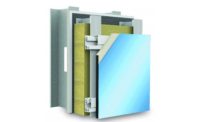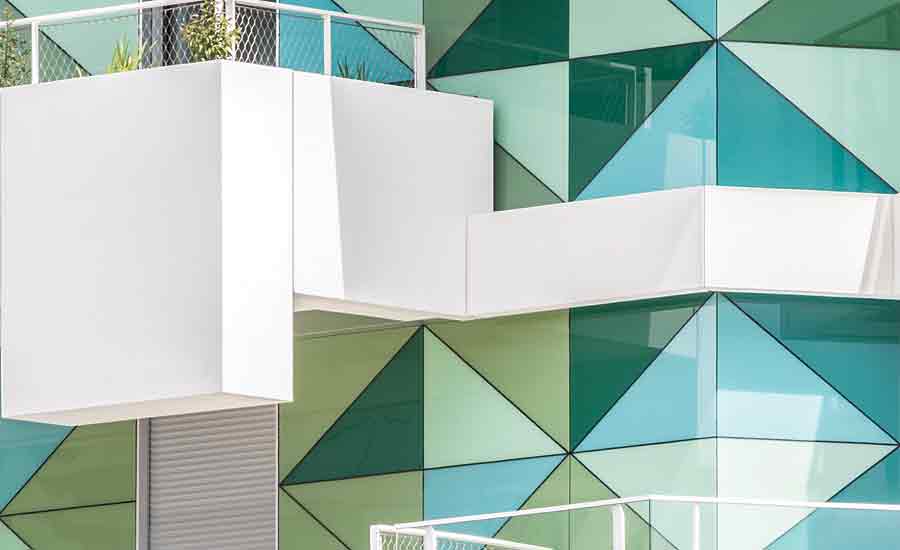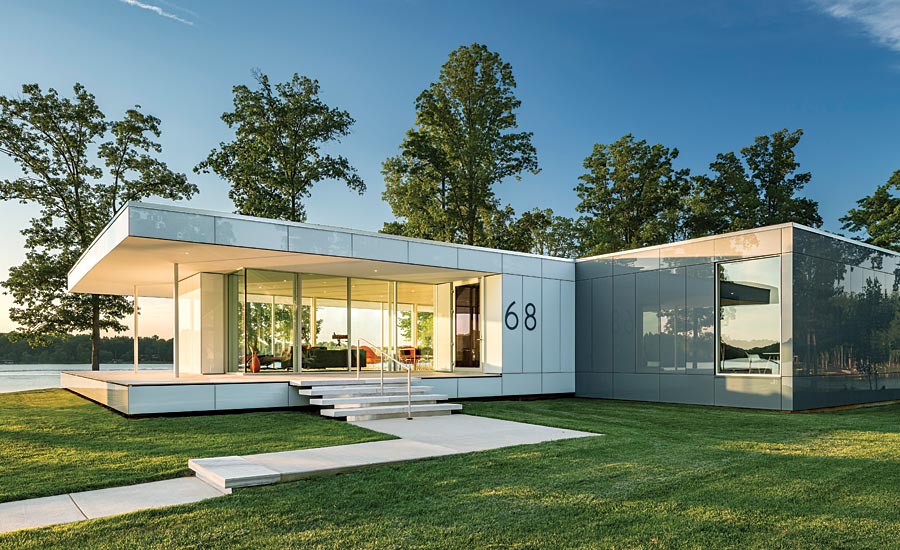Rainscreen Systems: The Pinnacle of Versatility and Performance
Ventilated Rainscreen Systems, Developed and Supported by a Single Manufacturer, Provide An Emergind Way for These Requirements to be Delivered Simply and Effectively.


A complete, single source, back-ventilated rainscreen cladding system that can have either a glass or textured finish cladding. Photo provided by Sto Corp.

The glass panel reflective properties in this rainscreen cladding take on different qualities and appearances enhancing the natural surroundings. Photo provided by Sto Corp.



Today’s architects, specifiers and contractors are faced with a number of challenges when designing the building envelope. Increasingly, they know that the solutions they choose must serve two masters. First, the solution must deliver advanced performance properties, so the building is protected from the elements. Second, the product must offer designers a wide array of options and colors, so it generates the kind of aesthetic appeal that turns heads.
Recent advancements in the development and manufacturing of rainscreen systems are empowering key decision makers to deliver on multiple promises at the same time.
A Critical Line of Defense
At its most fundamental level, a rainscreen system is designed to defend a building against constant exposure to the elements—rain, wind and snow. More specifically, a rainscreen system is an exterior wall where the cladding stands apart from the surface of a moisture barrier that has been applied to underlying substrate. This configuration creates redundant capillary breaks and allows for moisture drainage and evaporation.
To effectively meet today’s market demands for exterior wall design, a rainscreen wall must go well beyond protecting a structure against the forces of Mother Nature. Manufacturers know that to be competitive, their products must combine constructability, validated performance, aesthetics and competitive as-installed cost. By developing a complete wall system, code compliance of the system can be confirmed by third-party verification. Further, since they are involved in all aspects of the wall, manufacturers can create extensive detail sets, specifications and application instructions for their products. They can also support them with field technical service experts. This empowers installers and contractors to effectively deliver high-performance walls, on time and within budget.
Well-designed rainscreen systems create value throughout the design and construction process. Architects can focus on creating the right aesthetic for the exterior of the building while also meeting performance and cost objectives. In turn, general contractors reduce their risk by employing proven installation practices. Installers can tap into technical expertise from the manufacturer if they have questions during installation.
An Evolving Ecosystem—The Challenge of Complexity
As marketplace demands change, manufacturers step up to meet those demands, but true advancements take time. When it comes to rainscreen solutions, the ecosystem is still evolving.
Right now, most of the solutions are still one-dimensional. They are only one component of a multi-faceted system that needs to be in place for the building envelope. When it comes to designing the building envelope, this places added demands—and additional stress—on architects, who must research, review and specify multiple components from different manufacturers. This costs time and money, impacting overall project budgets and timelines that are already tight.
Such an approach also lays the foundation for added complexity once the building is occupied. What if some part of the building envelope doesn’t perform as expected? If the solution is made of many different parts—each with their own label—who is to blame? This can result in the inevitable scenario of finger pointing, where no one is prepared to assume the responsibility for what went wrong.
An Integrated System—Both Art and Science
A closer look at some products in the marketplace demonstrate that manufacturers are working to ensure that their solutions create the right mix of performance, durability and curb appeal in a singular solution.
Cutting-edge ventilated rainscreen cladding systems are engineered to provide superior weather-tightness, hygrothermal performance and fire protection. Components can include some or all of the following:
- An air and moisture barrier;
- Thermal insulation, with thicknesses that accommodate thermal performance requirements;
- A sub-construction with mounting brackets anchored into the substrate that fastens the rainscreen cladding to the underlying substrate;
- A ventilation gap, created by the subconstruction, outbound of the insulation layer, and;
- An exterior rainscreen cladding that provides durability, aesthetic appeal and water shedding capabilities.
Discerning architects and specifiers seek products that have versatile finishes for design flexibility—everything from coarse textures to ultra-smooth surfaces, in a variety of colors. Rainscreen cladding systems that employ glass for the outer layer create even more possibilities for architects to put their signature on the exterior wall of a structure.
Opaque glass rainscreen systems use pigments that are fused into the back of the glass, providing permanently colored glass panels that resist wearing, scratching, fading or water damage.
Ultimately, reliability and predictable performance win the day when it comes to selecting the right rainscreen system. How will it stand up to the elements over time? Is it resistant to fire? How about wind resistance? Integrated systems with single source warranties, comprehensive testing and case histories that demonstrate high performance in real-world conditions make it easy for design professionals to specify attractive, cost-effective, code-compliant building enclosure solutions.
Real-World Application
While rainscreen claddings are often found on commercial buildings, they also have applications in the luxury residential market.
Jeff Davenport, a principal at Perkins & Will, a global design and architectural firm, decided to install a rainscreen cladding system utilizing glass panels on his home on Lake Anna, which is situated in Louisa County, Va. It is the first installation of its kind in the United States.
The contemporary design for the home initially called for metal panels. The contractor presented several options to Davenport, and the architect selected the glass panels because they would provide better insulation and striking aesthetics.
“I couldn’t be more pleased with the final results of the exterior cladding,” says Davenport. “Through the glass’s reflective properties, the home takes on different qualities and appearances throughout the day and the seasons. It allows us to see our home through a different lens every time we look at it.”
While Davenport is pleased with the selection of a rainscreen cladding system for his home, he also sees great application opportunities in commercial design—from high-rise buildings to street-level retail.
A Solution with Staying Power
From office buildings to museums, hospitals and premium residences, sourcing and installing the optimal solution for the building envelope requires an integrated approach. All components of a wall system must work together to manage air, moisture, thermal, mechanical and fire performance. And high-end building enclosures absolutely must look fantastic.
The pressure placed on everyone in the chain is evident. Architects are legally required to produce designs that meet building code requirements. The general contractor is bound by those same mandates. At the same time, building owners demand solutions that deliver aesthetic appeal. And in the end, the product that is ultimately chosen must come at a cost that is in line with the project’s overall budget.
Ventilated rainscreen systems, developed and supported by a single manufacturer, provide an emerging way for these requirements to be delivered simply and effectively.
Looking for a reprint of this article?
From high-res PDFs to custom plaques, order your copy today!













